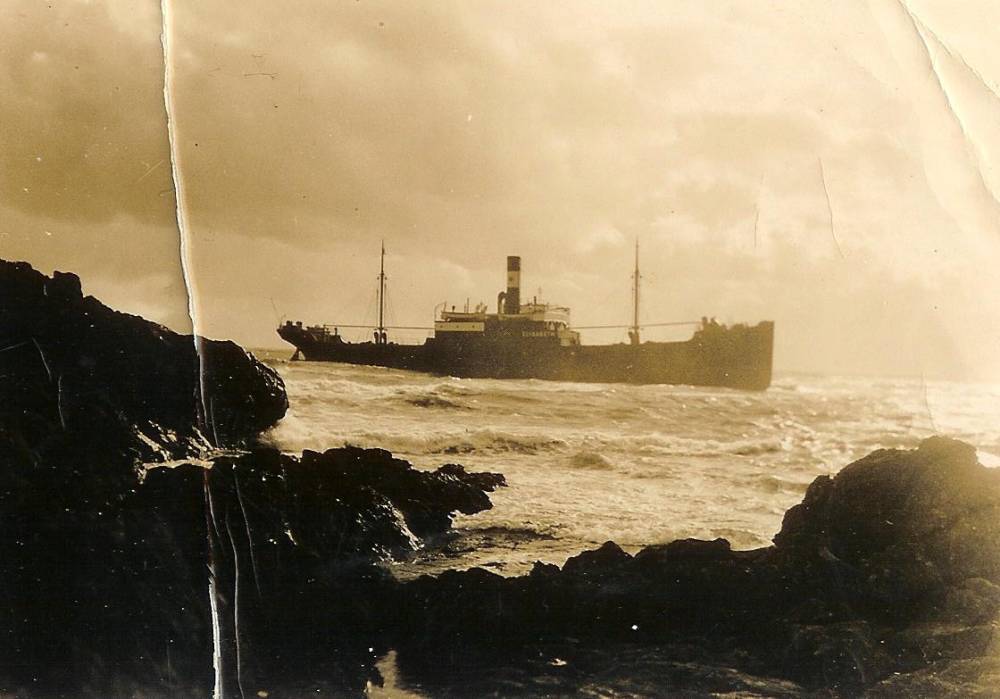Life Around the Sea - 1875 and 1935
Life Around the Sea - 1875 and 1935
"There are always ‘Whisky Galore’ type stories around the coastline of any country and no-more so than the Mull of Kintyre peninsular. I have been told many stories of the past centuries of ships going aground and the local men retrieving the washed ashore goods, such as the time when bales of material came ashore-by natural means or other! And many of the village houses were soon sporting matching curtains and the children went to school finely adorned in clothes all made from the same bales of cloth! Of course these tales cannot be verified and no doubt they have a little dramatic licence about them. However, proof of plundering wrecks can be found in Southend School Log Book for the 12th July 1875 which reads, ‘School thinner than usual owing to the wreck of a vessel about a mile distant from school. Many of the parents with their children visiting vessel’
"On the 14th July, the Log Book continues ‘Sent list of absentees to officer. The vessel is laden with oranges and lemons and the children are gathering them on the beach’.
"The wreck was still proving a problem with school attendance a week later as on the 18th July, 1875 the head teacher writes, ‘A few of the scholars still absent from school, employed gathering firewood at the wreck, Tantivy’. A report in a local newspaper of the time tells us that the schooner had left Seville in Spain with a cargo of sulphur ore and oranges and was bound for Glasgow with five crew and one passenger. The boat had gone aground on Brunerican Beach in bad weather and all on board was rescued. When I interviewed Rae MacGregor whose mother was Polly MacIntyre, she related to me the story of the Danish Steamer the SS Elizabeth that went aground on a reef off Johnston’s Point which was in sight of their farm at Feochaig.
"It happened on a November night in 1935 when a south-westerly gale force storm was lashing the coastline. Nellie MacIntyre, Rae’s aunt was awakened by the noise of the rain beating on the windows and looking out she witnessed the ship go aground on the rocks. She wakened the rest of the family and her brother Jackie drove his car as close to the headland as he could and flashed his headlights to let the crew know that help was on its way. Then Jackie and his brother Jamie set off for Southend (as there were no telephones in this rural area in those days) to alert the coastguards. The Southend coastguards alerted the Campbeltown lifeboat which arrived on the scene at 6.00am but was unable to rescue any of the crew.
"In the meantime the Southend Life-Saving Brigade (a volunteer service which aided the coastguards) arrived at Feochaig and battled their way down to the shore where they managed to rescue three of the youngest members of the crew. Later with the aid of a breeches buoy the rest of the crew were hauled to the safety of the land. The wet and exhausted crew were taken to Feochaig where they were provided with hot soup and dry clothing. However, as there was a majority of females in the household some of the seamen had to be happy with dry skirts and jumpers!"
As told by Avril Stone
More information on visiting the area can be found here.
